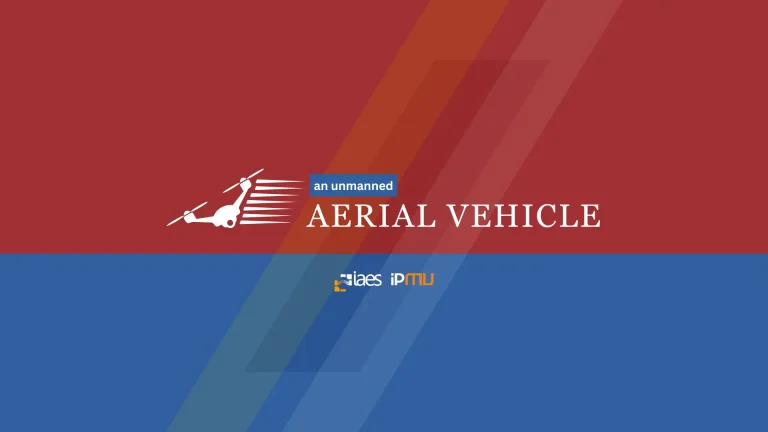Salam, rekan Nawala! Semoga kalian selalu dalam keadaan sehat.
Ini adalah IAES Nawala dari Institute of Advanced Engineering and Science. Hari ini kami akan berbagi kabar mengenai peran drone untuk pemrosesan citra. Kombinasi penggunaan drone dan pemrosesan citra dapat diimplementasikan untuk menjadi berbagai macam solusi, terutama untuk melakukan pemantauan berskala besar. Alsafasfeh dkk. (2022) mengusulkan metode baru dengan mengkombinasikan drone dan pemrosesan citra untuk pemantauan secara real-time mengenai kondisi sistem pembangkit listrik tenaga surya. Metode ini menggunakan dua jenis kamera yang dipasang pada drone, yaitu kamera termal dan kamera charge-coupling (CCD). Penelitian ini juga menguji pemrosesan paralel untuk mengurangi waktu pemrosesan sistem inspeksi dan menunjukkan hasil percepatan yang lebih baik. Dalam penelitian ini, mereka menggunakan modul multiprocessing di Python untuk menjalankan algoritma pendeteksian kesalahan pada frame (yang dihasilkan oleh kedua kamera). Hasil eksperimen menunjukkan penurunan waktu eksekusi dengan efisien, dengan rata-rata 3,1 kali menggunakan 2 proses dan 6,3 kali menggunakan 4 proses. Kesimpulan yang didapatkan menunjukkan bahwa pemrosesan paralel dapat secara signifikan mengurangi waktu eksekusi dan meningkatkan kinerja pemantauan kondisi sistem pembangkit listrik tenaga surya secara real-time.
Super-linear speedup for real-time condition monitoring using image processing and drones
Moath Alsafasfeh, Bradely Bazuin, Ikhlas Abdel-Qader
Real-time inspections for the large-scale solar system may take a long time to get the hazard situations for any failures that may take place in the solar panels normal operations, where prior hazards detection is important. Reducing the execution time and improving the system’s performance are the ultimate goals of multiprocessing or multicore systems. Real-time video processing and analysis from two camcorders, thermal and charge-coupling devices (CCD), mounted on a drone compose the embedded system being proposed for solar panels inspection. The inspection method needs more time for capturing and processing the frames and detecting the faulty panels. The system can determine the longitude and latitude of the defect position information in real-time. In this work, we investigate parallel processing for the image processing operations which reduces the processing time for the inspection systems. The results show a super-linear speedup for real-time condition monitoring in large-scale solar systems. Using the multiprocessing module in Python, we execute fault detection algorithms using streamed frames from both video cameras. The experimental results show a super-linear speedup for thermal and CCD video processing, the execution time is efficiently reduced with an average of 3.1 times and 6.3 times using 2 processes and 4 processes respectively.
Norahim dkk. (2023) menggunakan drone dalam pemrosesan citra untuk merekonstruksi model 3D dari lokasi kecelakaan. Mereka menganalisis berbagai paramater penerbangan dan metode untuk pengambilan data. Hasil penelitian ini mencakup model 3D dari lokasi kecelakaan, peta ortofoto, dan penilaian akurasi model 3D yang direkonstruksi. Untuk mengevaluasi keakuratan model 3D, peneliti menggunakan nilai root mean square error (RMSE). Metode terbaik yang menghasilkan RMSE terkecil adalah dengan menggunakan metode melingkar dengan kontrol tanah 5 meter. Hasil ini menunjukkan bahwa drone dapat digunakan untuk menggantikan pengukuran di lapangan dalam merekonstruksi lokasi kecelakaan. Kesimpulan yang didapatkan menunjukkan bahwa penggunaan drone dalam pemrosesan gambar dapat memiliki dampak signifikan dalam investigasi kecelakaan dan kemacetan lalu lintas.
Reconstructing 3D model of accident scene using drone image processing
Mohamad Norsyafiq Iman Norahim, Khairul Nizam Tahar, Gyanu Raja Maharjan, Jose C. Matos
At the current stage, an investigation technique on the accident takes a longer time and this causes longer traffic congestion. The aim of this study is to reconstruct a 3D model of an accident scene using an unmanned aerial vehicle (UAV). The flight parameters that have been chosen are the circular method, the double grid method, and the single grid method. All these designs can produce a good 3D model to achieve the study’s objective. The methodology in this study is divided into 4 phases which are preliminary work, data acquisition, data processing, and data analysis. The main results of this study are the 3D model of the accident scene, an orthophoto map layout, and an accuracy assessment of a 3D model of reconstructed accident scene. All these parameters will be tested on accuracy based on the root mean square error (RMSE) value, comparing the UAV data and site measurement data. This objective has been tested for 10 different types of processing and different types of flight parameters. The best result among all the methods is the circular method 5 meters with ground control point (GCP) since this method has the least RMSE value which is 0.047 m. UAVs can replace the site measurement to reconstruct the accident scene.
Beberapa artikel di atas merupakan bagian kecil dari penelitian mengenai peran drone untuk pemrosesan citra. Untuk mendapatkan informasi lebih lanjut, pembaca dapat mengunjungi laman International Journal of Electrical and Computer Engineering (IJECE) dan membaca artikel secara GRATIS melalui tautan-tautan berikut: https://ijece.iaescore.com/.
Redaksi: I. Busthomi



